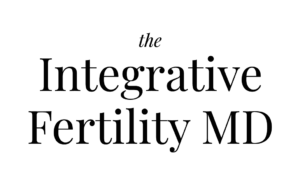If you’ve been trying to get pregnant or you’re thinking about trying for a baby – the first step is to ensure you understand how pregnancy takes place in a woman’s body.
Our early education teaches us that unprotected sex can lead to a pregnancy. On a very basic level, this can be true but there is a lot going on in a woman’s body and it’s not nearly as simple as we’re sometimes led to believe. A menstrual cycle takes place all month, and is not just the period itself. Timing plays an enormous role in getting pregnant, and many people find it surprising to learn just how small that window of time is.
If you’re trying to conceive it’s vital to know what your body is doing as you go about your day to day life. It’s important to note that bodies and their functions vary greatly. Below is a general outline of the menstrual cycle, and there are always exceptions to these “rules”. In fact, it is some of the exceptions that can be a barrier to your fertility, so knowing the how is the first step in understanding your individual cycle and how it can impact your fertility.
The Phases of Menstruation
1. Menstrual Phase
This is the phase in which a woman has her period. Medically, it is considered the first phase of the monthly cycle, often referred to as Day 1. It happens because the egg from the previous phase was not fertilized. Each month the lining of the uterus thickens in preparation for pregnancy. When pregnancy does not occur, the lining sheds, and this is what we commonly call a woman’s period.
2. Follicular Phase
There is an overlap in phases. This one begins on the first day of a woman’s period and ends when she ovulates. FSH (follicle stimulating hormone) is released and stimulates the ovaries to produce follicles. These follicles (small, fluid-filled sacs) contain immature eggs, where one egg will mature and the rest will die. While less common, it is possible that two eggs may mature. The maturation of the egg triggers estrogen to increase and create a lining in the uterus (nutrient-filled home for a potential baby). This phase can last from 11-27 days.
3. Ovulation Phase
A more well-known phase is ovulation. This is when the ovary releases the mature egg and it’s picked up by the fallopian tube, where it potentially meets with sperm for fertilization. Ovulation takes place around day 14 and generally lasts 12-24 hours. If the egg isn’t fertilized in that time, it will die.
4. Luteal Phase
During this phase, the hormones progesterone and estrogen rise to keep the uterine lining thick. If a woman is not pregnant, these hormone levels will drop and the lining will shed, bringing it back to phase 1.
When Does the Magic Happen?
Pregnancy occurs during the ovulation phase, which is a very short time frame.
It’s vital to know that every woman’s body is different and the length of each phase varies. This is why it’s important to learn your own body, and when your own ovulation actually occurs – or if you are in fact ovulating at all. It can be a confusing process, but learning this can help you navigate the journey of trying to get pregnant. If you have irregular periods or think you may or may not be ovulating while trying to conceive, it’s important to see your doctor right away. There could be an underlying condition impacting your efforts.
To learn more about ovulation here’s a helpful link: https://www.verywellfamily.com/signs-of-ovulation-1960281
If you want support learning about your own fertility, consider meeting with Dr. Shala, you can schedule a visit with her here: https://www.pacificreproductivecenter.com/contact/




